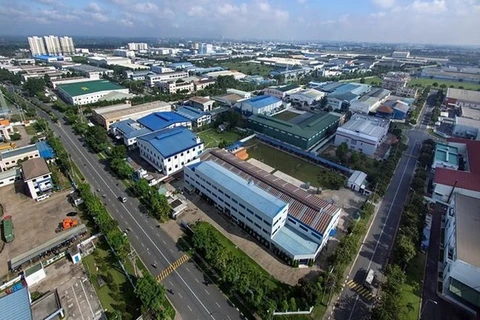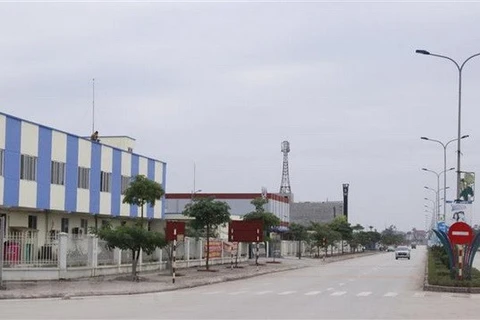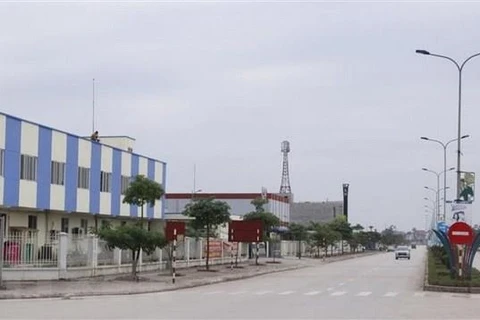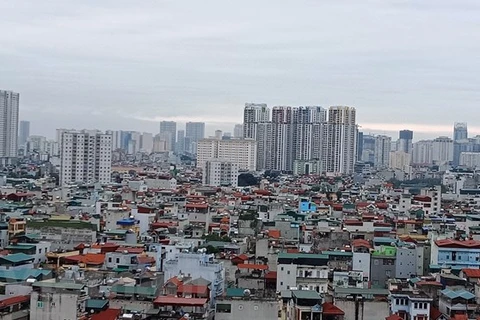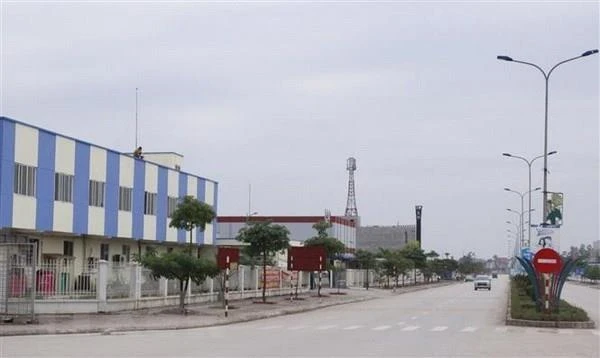
Hanoi (VNA) – Vietnam’s industrial zones have been attracting attention from foreign investors thanks to its robust economic growth, abundant workforce, and the signing of various free trade deals which are expected to form a more favourable business climate, according to the latest report from Jones Lang LaSalle (JLL).
General Director of JLL Vietnam Stephen Wyatt said the Comprehensive and Progressive for Trans-Pacific Partnership (CPTPP) and the EU-Vietnam Free Trade Agreement (EVFTA) demonstrate the Vietnamese Government’s willingness to integrate more deeply into the global economy. This will bring various opportunities for investors as tariff lines on goods will be abolished and this will serve as a push for Vietnam to improve its business environment.
In the last 20 years, Vietnam has switched from being an agriculture-based economy to one of the brightest manufacturing hotspots in the Southeast Asia, and it is establishing itself as an industrial powerhouse in the region. There was only 335 hectares of land dedicated to industrial parks in 1986, and now the figure has risen to 80,000 hectares.
The JLL recorded a strong growth in the number of foreign investors who are seeking investment in Vietnamese industrial realty market. They are typically engaged in three market entry strategies.
Direct land use acquisition from industrial park operators is a traditional way to own industrial assets, as many operators sublease it to various tenants for remaining tenure. The investors can also purchase directly from the Government. A notable example is Amata Corporation, an industrial estate provider from Thailand, who obtained the land use from the Government and set up Amata City Bien Hoa, a 342-hectare lease area industrial park located in Dong Nai province in 1994.
Meanwhile, many investors choose to form strategic joint venture with renowned local partners who have access to land bank and can assist them on licensing process. A good example of this strategy is a joint venture in 1996 between Becamex IDC Corp of Vietnam and Singaporean-based Sembcorp Development Ltd. They have developed nine Vietnam-Singapore Industrial Park projects across the country, with a total land fund of more than 8,600 hectares, providing infrastructure for nearly 900 enterprises who registered 14 billion USD in investment.
Most recently, BW Industrial Development, a joint venture between global private equity fund Warburg Pincus and Becamex IDC Corp, was launched. With over 200 hectares of industrial land, BW Industrial is the largest “for-rent” industrial and logistics development in Vietnam.
Another typical market entry strategy for investors is either direct land use acquisition or sale and leaseback of operating industrial assets with stable income. In 2018, Mapletree Logistics Trust spent 725.1 billion VND (31.3 million USD) snapping up a warehouse of Unilever International Company Limited. Upon completing the deal, the asset would be leased to Unilever Vietnam for 10 years with annual rent escalations.
Although Vietnam is an attractive destination of the Southeast Asia’s industry, investors may face challenges while looking for investment opportunities in the country.
Strong demand together with business expansion of manufacturers from China drove the average and price in the second quarter in 2019 to a new level of 95 USD per square metre per lease term, a year-on-year increase of 15.8 percent.
Besides, the JLL also pointed out that it is not easy to find a trustworthy partner who owns land fund in strategic locations, has deep insight into local market and long-term cooperation commitment.
Other challenges include shortage of infrastructure due to sluggish land clearance, compensation, and lack of capital, high costs of administrative procedures, and less efficient customs procedures as compared to other regional countries.
Therefore, Vietnam should work more to reform infrastructure network and administrative procedures, as well as pay due attention to high-quality human resources training and encouragement of advanced technologies to lure more foreign investments, Stephen stressed.
He said industrial property will continue to lure interest from foreign investors in the second half of the year. The rapid growth of the middle-income population, development of e-commerce that results in strong demand for logistics facilities, coupled with the insufficiency of high-tech assets and modern warehouses, will support the potential of the industrial property market.-VNA
VNA
